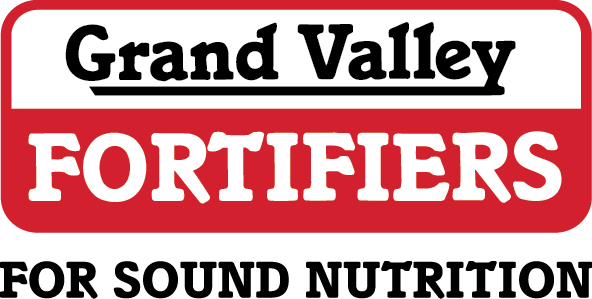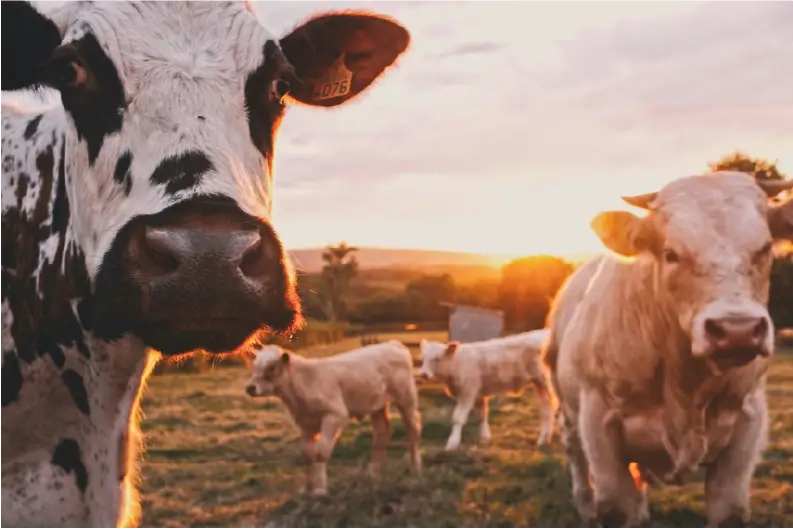Ruminant Nutrition Consultant
Grand Valley Fortifiers
Crossbreeding dairy cows with beef has been a hot topic in the dairy industry recently for very good reasons. For years our industry has already been challenging traditional views on heifer raising and inventories, as sexed semen became more widely used and costs of production continued to rise. Canada also now finds itself facing record droughts, resulting in forage inventory constraints, on top of rising interest rates. Many producers are finding themselves with lower cash flow than ever before and are taking harder looks at their economical sustainability. What is tying up the most cash? Most producers will likely answer feeds costs, and there’s no doubt in today’s market that those are significant. However, if you dive into the numbers, you may find the answer is the inventory you are holding. That inventory is a broad spectrum of things, from feed to machinery to animals. Moving some of your animal numbers into beef x dairy crosses is a great way, in this current market, to turn your inventory into a cash flow opportunity.
Across the Canadian prairies and U.S., the beef industry has taken the same big hits over the last couple of years caused by the drought and high feed prices, resulting in a record loss in the amount of beef animals being raised. This is now driving up beef prices, with the demand for beef remaining consistent and our exports rising, now eyes are on the dairy industry to help bridge the gap. Today, many companies have now launched sexed Holstein x angus cross programs that focus on high quality, terminal crosses designed to maximize gains and feed efficiencies. These animals are now being reported to perform as well as conventional beef animals, and dairy producers can get paid similarly for dairy x beef crosses. Some semen companies now offer programs to facilitate the purchase of calves for $500-$700 or more, which is a very nice cash influx for only changing your breeding strategy to incorporate beef. So, how can dairy producers really take advantage of this? First, you need to understand what heifer inventory you need to maintain your herd and how much beef x dairy breeding you can afford to do.
There are two calculations for heifer inventories:
- Replacements needed per year: (herd size) × (cull rate) × (age at first calving ÷ 24) × (1 + noncompletion rate for heifers).
- Heifers produced per year: (herd size) × (12 ÷ calving interval) x (percent female calves) × (1 – calf mortality rate) × (24 ÷ age at first calving).
*Calf mortality counts deaths in the first 48 hours after birth.
*Non-completion rate is the proportion of heifers born alive that leave the herd before first calving
In this example, we are going to work around the first calculation for a 130-cow dairy (milking and dry), with a cull rate of 20%, and a non-complete rate of 4%. This farm needs to have 163 calving’s per year or an average of 14 calves per month (130 x (1 + 0.2) x (1 + 0.04) = 162.24/12 months = 13.5 calves) to ensure they can sustain their milking herd. They target a rate of 30% two-year-olds in the milking herd so they need to have at least 4 of those 14 calves to be heifer calves (13.5 calves/month x 0.3 = 4.1 heifers/month). Therefore, if they have a calving interval of 24 months, they will need to have at least 97 heifers (4.1 heifers/month x 24 months) in their youngstock inventory. In case there are any issues with any heifers this farm carries an extra 5% in their youngstock inventory, so they aim for around 114 heifers (13.5 calves/month x 0.35 = 4.7 calves/month / 12 months = 113.6 calves/year). To ensure they have 114 heifers in their inventory they use 70% sexed semen in their herd. For the remaining 30% they use a sexed angus semen. They raise the beef x dairy calves through their calf program to around 350+ lbs at 4 months and then they sell them at market prices. This farm uses milk replacer that costs $95/bag and they feed the crossed calves 6 L/day. They buy in their commodities and make their own calf mash on farm using the Grand Valley Fortifiers calf premix, so their total grain cost is around $500/mt. The calves pick up in grain intake between 4-8 weeks of age, so they average around 1.5 kg/day and are weaned at 60 days. Between the milk placer ($256.50) and calf mash ($22.50) the total preweaning feed costs are around $279/calf. The calves then stay on their calf mash for another two months until they are sold at market which costs another $90/calf (average 3kg intake x 60 days x $0.5/kg). The total feed costs to raise a beef x dairy cross calf is $369. Market prices will always fluctuate, but as of the beginning of February, you could average $4.40/lb for a 350 lb calf, making the gross profit $1,540/calf and a net profit after feed costs $1,193/calf. If this farm fed whole milk at a cost of production price of $0.30/L their net profit would be $1,319/calf. With 30% of their calving’s (49) being angus crosses this brings in $58,481/year on milk replacer or $64,655 on whole milk. If they had chosen to sell day old calves for $700, they would only have added $36,400 to their cash flow.
Since they aren’t raising as many dairy heifers and have the space in their calf facilities available, raising beef x dairy through their calf program to 350+ lbs has been a great way to improve the farms economical sustainability. Raising crosses past 350 lbs could still yield great returns if the facilities, feed inventory, and man-hours are available to maximize their feed efficiency. Previously, this farm bred the remaining 30% to conventional semen and raised around 139 replacement youngstock. In addition to the cash flow from beef sales they now save around $81,250 in feed costs by not raising another 25 heifers at an average total feed cost of $3,250/heifer. In total, cash flow has improved to $139,732 on milk replacer or $145,906 on whole milk. If breeding to beef isn’t already a part of your breeding strategy, you may want to run your own numbers and give it a try!
This article was written for the Spring 2024 Central & Atlantic Dairy Grist. To read the whole Dairy Grist, click the button below.

